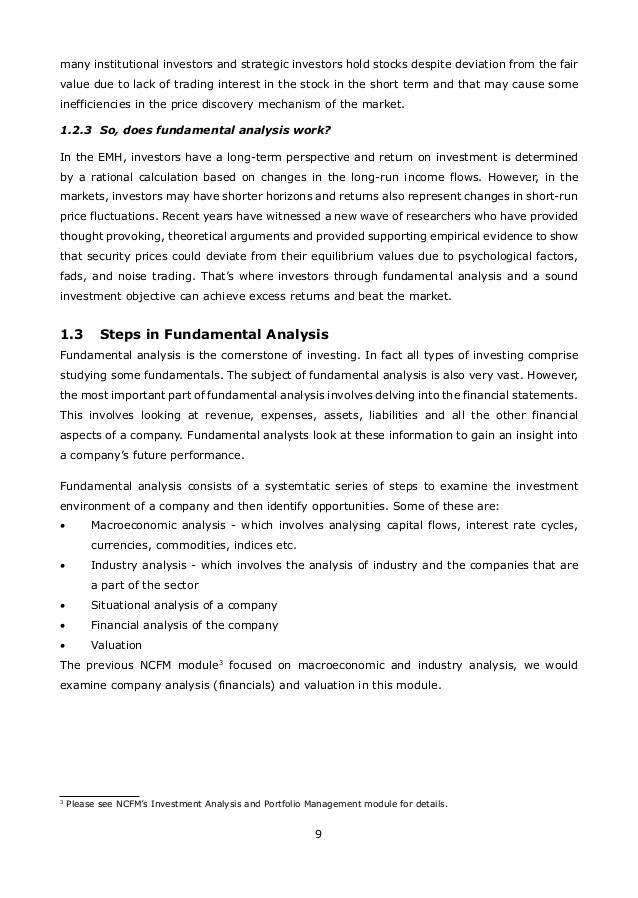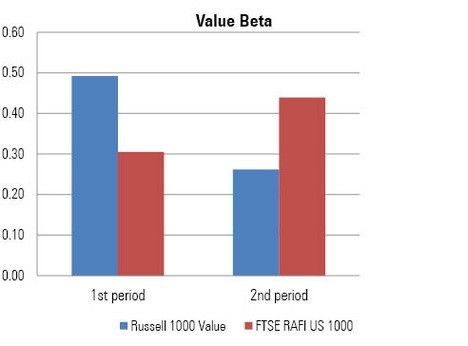Stock Strategies Basics of The Value Investing Stock Strategy
Post on: 12 Апрель, 2015 No Comment

Value investing is a very popular stock strategy where investors seek out companies that they believe have the ability to create profits at an acceptable level during a sustained holding period. An acceptable level of profits would probably mean doing better than the market average, but it would be different for every investor. What is the same for all value investors is the desire to buy a well performing stock at a bargain price.
For value investors, simple market factors that can cause fluctuations in stock prices are not of great concern. Common market factors which tend to affect stock prices are: inflation reports, Fed rate hikes, oil prices, and wars. While it is true that market factors will affect stock prices, value investors tend to look further down the road and, therefore, believe temporary fluctuations will not affect long-term profitability when owning value stock. In fact, the buy and hold stock strategy is employed by most value investors because they tend to hold onto value stocks for many years at a time. Where the two strategies differ is in their selection of stock.
Value investors are not concerned with market factors as much as the actual companies in which they are investing. In fact, a value investor likes to know the fundamentals of a company or all factors relevant to the business and its relative strength in the market. Some very useful fundamentals for value investors to know include: cash flow, earnings growth, dividends, and company debt.
However, just because a company is sound in all of the categories listed above, that does not mean it would be considered a value stock investment opportunity. A company with great cash flow, solid, consistent earnings growth, reasonable dividends and relatively little to no company debt may actually be a growth stock investment and therefore not desired by a value investor.
The value investor is looking for the best deal: a company with sound fundamentals but, trading below its true value for some reason. The market should eventually correct its inaccurate valuation and, send stock prices sharply upward when that correction occurs. This is why value investors comb the markets for great companies that have been missed by analysts and the investment community.
But, finding a good investment that appears undervalued by the market (and therefore trading at a price below its true worth) is not the same as buying cheap stocks or those that have already peaked and wont recover. There is usually a fundamental reason behind the decrease in the market value of a company and the consequent plummet in stock prices: essential business principles or operations may have changed (such as decreased earnings, loss of market share, etc.). Fundamental market changes will also cause fluctuations in value, such as government imposed new emissions regulations on the auto industry that would severely increase the costs of production for all automakers.
Analysis in Value Investing Stock Strategy
As the value investor is trying to find good companies with strong growth and earnings potential that have been overlooked by the market somehow, a lot of homework and analysis will be necessary. The trick for anyone using the value investing stock strategy is to find the true value of the company as opposed to its market value. A number of factors are used to determine the true value of a company and each investor will have their own winning formula. Some common valuation metrics for value investors are:
Price/Earnings Ratio (P/E Ratio) The P/E ratio can be used to determine how the earnings of a business compare with the current share price. It is obtained by dividing the current stock price by the annual earnings per share. The higher a companys P/E ratio. the greater the expectations placed upon it by investors in the near future. These higher expectations also drive up stock prices, which is why investors using the value stock strategy do not like high P/E ratios as they may indicate that the company is over valued by the market. This is precisely the opposite of what a value investor is looking for instead, the value stocks tend to be those that have a P/E ratio in the bottom 10-20% of their business sector.
PEG The PEG is a valuation metric concerned with future earnings growth. The PEG factors in future growth rates with the P/E ratio. It is calculated by dividing the P/E ratio by the projected growth in earnings for the coming year.
PEG = P/E Ratio / Projected Growth in Earnings
For instance, assume that Business A has a P/E ratio of 15 with projected earnings of 12%, or 15/12. Most value investors like companies with a PEG of 1 or less because it is a good indicator of being under valued by the market. Business A has a PEG of 1.25 which means that investors are willing to pay more for future earnings growth than a company with a PEG of 1 or less. Essentially, the market already recognizes the value in company A and, the stock prices have risen accordingly. Thus, company A would not be considered a value investment but, may still be a solid growth stock worthy of investment. The higher the PEG number, the more expensive the investment and the less likely a value investor will be interested in owning stock in that company.
Solid Earnings Growth over an Extended Time

It is not uncommon for a company to have great earnings over a period of 6-8 years and, then decide its time to take the business public. After a great IPO, the business may stagger and fail to meet earnings or revenue expectations. As a result, the stock may nose dive and fall out of favor with the investment community. Value investors, however, see this as a potential opportunity: solid and sustained earnings growth is no accident the company knew what it was doing before and, one or two bad quarterly reports dont necessarily spell disaster. In fact, they may be due to massive investments in the company that may result in increased profits, higher dividends, and higher stock prices in the not-so-distant future. If a company can maintain 7-10% earnings growth over a period of 5-6 years or more, then one or two misses can probably be explained by some temporary factors. So long as the fundamentals remain solid and any poor performance is explained sufficiently, a value investor would consider this a value stock with the prospect of solid future earnings growth as well.
Intrinsic Value
Determining the value of a business used to be fairly straightforward: add up all the assets, subtract any outstanding debt and financial obligations whatever remains is the value of the company. Value investors need to look beyond the obvious assets and market position of businesses especially in the Information Age.
It is difficult, if not impossible, to put an accurate value on intellectual property, developing technology, and any knowledge based asset. How do you know what a patent is truly worth when you dont know what future sales will actually be? How many sales are made because of a trademark or logo what if you had to put a dollar amount on how much that trademark is worth? Sometimes, these corporate intangibles do not even show up on the financial statements. Value investors seek out and purchase stocks when they believe that current share prices do not accurately reflect the value of intangibles and their potential to affect future growth. When the market corrects based off of higher-than-expected earnings and revenue, the stock prices will rise nicely and handsomely increase investor profits.
To find the intrinsic value of a company, investors need to determine the market cap or establish how much it would cost to buy every single share of company stock at current market prices. This is the total value of the company according to the market including intangibles, fundamentals, and market conditions. A value stock generally has a market cap which is close to or maybe even lower than the book value.
The book value of a company is found by totaling assets and, subtracting all obligations and liabilities. If the assets had to be liquidated and all the debts paid off, how much would be left? That is the book value of the company. The market cap will exceed the book value by a fair margin in growing companies because of their ability to generate earnings growth often due to intangibles such as patents, trademarks, or other intellectual property that gives them an advantage over the competition.
Value investors use a number of valuation metrics and analysis to help find stocks that are under valued today, but are destined to rise once the market corrects its mistake in the future. P/E ratio. PEG, earnings growth, and intrinsic value are just some of the variables that value investors look at when trying to find the best bargain stocks on the market.














